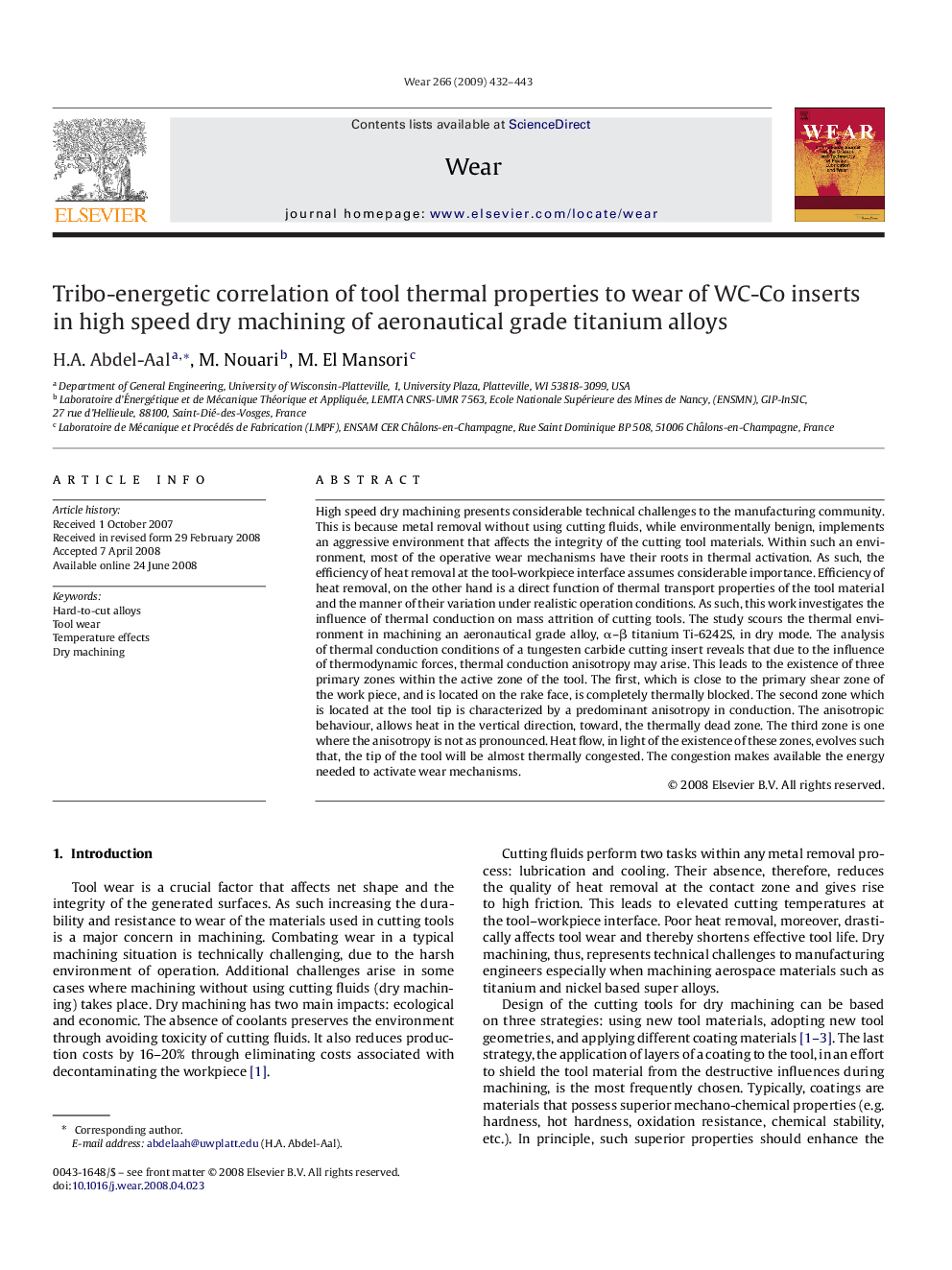| Article ID | Journal | Published Year | Pages | File Type |
|---|---|---|---|---|
| 618631 | Wear | 2009 | 12 Pages |
Abstract
High speed dry machining presents considerable technical challenges to the manufacturing community. This is because metal removal without using cutting fluids, while environmentally benign, implements an aggressive environment that affects the integrity of the cutting tool materials. Within such an environment, most of the operative wear mechanisms have their roots in thermal activation. As such, the efficiency of heat removal at the tool-workpiece interface assumes considerable importance. Efficiency of heat removal, on the other hand is a direct function of thermal transport properties of the tool material and the manner of their variation under realistic operation conditions. As such, this work investigates the influence of thermal conduction on mass attrition of cutting tools. The study scours the thermal environment in machining an aeronautical grade alloy, α-β titanium Ti-6242S, in dry mode. The analysis of thermal conduction conditions of a tungesten carbide cutting insert reveals that due to the influence of thermodynamic forces, thermal conduction anisotropy may arise. This leads to the existence of three primary zones within the active zone of the tool. The first, which is close to the primary shear zone of the work piece, and is located on the rake face, is completely thermally blocked. The second zone which is located at the tool tip is characterized by a predominant anisotropy in conduction. The anisotropic behaviour, allows heat in the vertical direction, toward, the thermally dead zone. The third zone is one where the anisotropy is not as pronounced. Heat flow, in light of the existence of these zones, evolves such that, the tip of the tool will be almost thermally congested. The congestion makes available the energy needed to activate wear mechanisms.
Related Topics
Physical Sciences and Engineering
Chemical Engineering
Colloid and Surface Chemistry
Authors
H.A. Abdel-Aal, M. Nouari, M. El Mansori,
